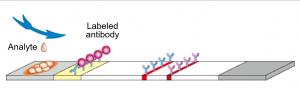Do you know Mark Zuckerberg? As you may already know, Mark Zuckerberg is a great IT businessman who dropped out of Harvard University as the founder of the SNS platform Facebook and became a billionaire at the age of 20. In an interview with 'THE VERGE' recently, he said that Facebook will switch from and SNS service to a metaverse company within the next five years. What is a metaverse, and why is the whole world paying attention to them? Did you want to know more about metaverses? So, will you go on a trip to the future with me?
First, what is the concept of a metaverse? A metaverse is a combination of the Greek “Meta”, which means “virtual or transcendental” and “universe”, which means “world or universe”, which refers to a three-dimensional virtual world where social, economic and cultural activities, such as those in the real world, are performed. “Metaverse” also seems to have been made very recently, but in fact, metaverse is a pretty old concept that refers to a fictional world that can be entered only through avatars. It first appeared in the novel Snow Crash by American science fiction writer Neal Stephenson in 1992. The game called Second Life, based on three-dimensional virtual reality, released in 2003 by Linden Lab CEO Philip Rosedale, inspired by this novel, became increasingly popular.
You might think, “Metaverse is something abstract.” You are right. Metaverse is an abstract concept. In fact, discussions on what metaverses are and the scope of metaverses are still divided. In the March 2021 report of the National Information Agency (NIA), it is said that metaverses should have a connection between the virtual world and reality, and that reality should be “alternative”, which means that NIA are a step further evolving from the current VR (virtual reality) technology.
So, what is the key technology that metaverses need? I'll explain it with a few pictures to help you understand.
Metaverse’ s first core technology is 5G, which requires a fast, slow-delayed mobile communication technology on account of the nature of the metaverse that must coexist with people around the world and in the virtual reality world. Many people are not aware of 5G technology, even though it was first introduced in Korea. The technology boasts a transmission speed of 20Gbps. This is about 20 times faster compared to 4G's 1Gbps, thus enabling the implementation of the core technologies of metaverses with VR and AR (augmented reality). You can connect all electronic devices, so you can make a real connection.
The core technologies of the next metaverse are likely to be introduced together: VR and AR. VR is a technology that allows people to experience the same thing in a virtual world created by a computer. It can be experienced by using a head mounted display (HMD) device, which is now commonly called a VR headset, and by watching or playing video produced exclusively for VR content. Next, AR is a technology that shows 3D virtual objects and information in the user's real world. This can be experienced through AR HUD navigation, which combines navigation with a Heads-up Display (HUD), which is mounted on the latest cars. Unlike ordinary navigation, the AR HUD navigation does not interfere with the driver's vision, making it more convenient and effective for the driver. Unfortunately, it is not yet equipped in many cars because of technical problems, but I think that many people in the near future will be able to experience AR HUD.
So then, what are the common points and differences between VR and AR technology? In short, both VR and AR have a common point in that they are technologies that enable users to recognize virtual reality. But the difference is that VR is all fiction; that is to say, virtual situations, while AR is a way to add virtual information to real reality.
Finally, we will learn about the current metaverse platform. As metaverses are popular all over the world, the metaverse platform related to them is also emerging. However, in this article, we will take examples of ZEPETO made by Korean IT company NAVER Z and Earth 2, made by Australian developer Shane Eisaac, from among many platforms.
First, ZEPETO is an AR avatar-based metaverse platform developed by NAVER Z in August 2018. As you can see in this picture, I made my own avatar and experienced various functions of ZEPETO. Specifically, ZEPETO has a function for taking pictures of your own face, creating an avatar that resembles you with AR technology, decorating the avatar, geting around a map called ZEPETO World, and communicating with other avatars.
However, it is an inconvenience that it is not rich in content because of the limitations of the early metaverse platform. Also, it can only be used with mobile devices. I personally thought that it was like an open world-based avatar game, such as Sims, and a combination of recent SNS, such as TikTok and Facebook. However, these inconveniences are expected to improve as VR and AR, which are the core technologies of metaverses, develop.
Next, Earth 2 is a metaverse-based virtual real estate platform created by Australian developer Shane Eisaac in November 2020. The biggest advantage of virtual real estate transactions on this platform is that you can buy as much land as you want to buy on the entire planet as you want, unlike in reality. Now, of course, because of technological constraints, we can only buy certain lands on Earth, which are defined as tiles, in virtual currency called "E$", or sell them at auction. However, according to the developer's plan, it will build a true "metaverse" by enabling the collection of resources from the ground in Phase 2, and building with the resources collected in Phase 3. In my personal opinion, this Metaverse-based virtual real estate platform is an innovative idea that can be a new investment in the future, so investing for fun is not bad, but I think investing for results can bring bad results.
Professor Kim Sang-kyun of Kangwon National University, an expert in virtual reality and author of the book Metaverse, argued that real estate investment in a metaverse should be thought of as purchasing green belt land in reality.
We've learned all about the concept of metaverses, the core technologies needed to implement them, and even the current metaverses platform. So, what is the future of metaverses? As we have seen before, a metaverse is mainly implemented through computers and mobile devices, which are traditional electronic devices. Rather than being similar to reality, it is a separate world from reality that represents parts of reality that are implemented in the virtual world. However, in the future, when mobile communication technologies such as 5G are more developed and VR and AR technologies are more advanced, it will be easy to experience metaverses by wearing VR glasses, as well as through using computers and mobile devices.
So far, looking at metaverses, I've suddenly seen Morpheus, in The Matrix, say to Neo, "Have you ever had a dream, Neo, that you were so sure was real? What if you were unable to wake from that dream? How would you know the difference between the dream world and the real world?" came to mind.
Metaverses can certainly lead to the coexistence and innovation of the real world in the virtual world, but it should be remembered that a metaverse can be subordinate to the virtual world and prevent us from living a proper reality.
Choi Yongha kubabiba7613@naver.com
<저작권자 © 홍익대영자신문사, 무단 전재 및 재배포 금지>





